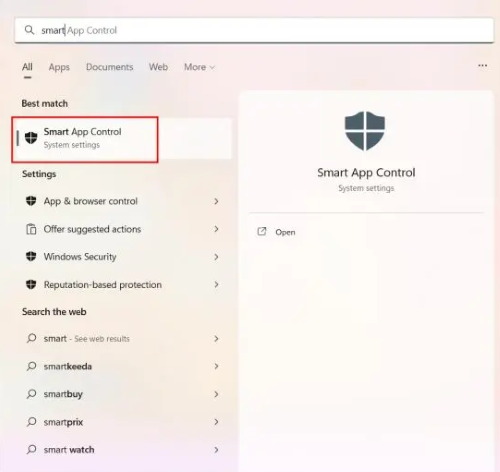Comprehensive Guide to Application Whitelisting: Top Whitelisting Tools for 2023
Are you worried about malicious and unwanted app access on your enterprise devices? If your employees are often found using third-party apps you don't want them to use; you don't need to worry anymore.
Application whitelist software is a straightforward method to limit the application's device access. This article will discuss advanced features to help you control access on your enterprise-owned devices.
Some terms like blacklisting and whitelisting are used in the IT industry to manage device access. We will discuss these terms to understand how to block irrelevant and unauthorized device applications.
- 1 : What is Application Whitelisting Technology?
- 2 : Application Whitelisting vs. Application Control vs. Blacklisting
- 3 : Best Application Whitelist Sofware for Different OS

- 4 : Best Practices of Application Whitelisting Tools
- 5 : Threats Mitigated via Application Whitelisting
- 6 : Limitations of Using Application Whitelisting Software
- 7 : Are There Any Standards to Look for an Application Whitelisting Software?
- 8 : Steps for App Whitelisting
- 9 : Benefits for Different Industries
1What is Application Whitelisting Technology?
Application whitelisting is an advanced technology that allows the use of selected applications while blocking all other applications. This technology consists of a directory containing the names of applications a specific device can access to perform routine tasks. It ensures that all unselected built-in and third-party apps are unable to operate.
Goals of Application Whitelisting technology
- Its primary goal is to provide a high level of security to enterprises by limiting access to authorized applications only.
- It prevents the devices from malicious attacks like viruses, ransomware, and Trojans.
- It helps to improve the performance and stability of devices.
2Application Whitelisting vs. Application Control vs. Blacklisting
| Technology | Definition | How It Works | Additional Attributes |
|---|---|---|---|
| Application Whitelisting | Application whitelisting is a parameter for security enhancement that provides a directory to add a list of applications that can access the device. | A directory is created with a list of trusted and required applications. Only these applications are allowed to execute on the device. Any application not added to the whitelist cannot run on the device. | It is highly scalable and customizable. You can easily change the list to add or remove applications when required. |
| Application Control | It is a security measure that enables enterprises to manage and control applications on enterprise-enrolled devices. | Application control provides granular control over the devices. It creates policies to define the application’s access and device restrictions. It can be done based on industry type and staff roles. | It offers more customization by allowing enterprises to block access to certain features of an application. It can also restrict built-in features and programs on the devices. |
| Blacklisting | Blacklisting is a technology that creates a directory for unauthorized and malicious applications so that the system restricts specific applications from running on devices. | This technology is opposite to whitelist technology. A list of unwanted applications is created, and the devices cannot access these applications while all other applications can run on the devices smoothly. | Enterprises can change the list with the emerging threats and identification of new malicious applications. |
3Best Application Whitelist Software for Different OS
Let's discuss the best software to manage application whitelisting on various operating systems enterprises use for business operations. Here are three software with their best features and support versions to manage the applications.
3.1Business devices: AirDroid Business
AirDroid Business is an MDM solution incorporating all the advanced features to meet all business security needs. It can remotely manage and control all Android devices from a centralized location. Here are the three best features of AirDroid Business that enforce security on all enrolled devices.

Kiosk mode
Kiosk mode ensures devices are running only desired applications. With single-app kiosk mode, admins can allow access to only one application, while they can also use multi-app kiosk mode to run more than one application based on the company's requirements.
Application Allowlist
AirDroid Business's app allowlist ensures that only selected applications can run on all devices. The system will block access to all remaining applications not added to the list.
Website Blocklist
It enhances security by adding all malicious and unauthorized website links to the blocklist directory. It ensures that the selected links cannot run on the devices as they can breach privacy.
3.2Android Smartphone: Freedom App
Freedom app provides a temporary facility to block malicious and useless applications and websites from Android devices. It only provides two and a half hours of productive time daily. Hence, it is perfect for using personal Android devices to avoid distractions while doing assignments and official work.

Its features include blocking websites and apps, syncing across devices, advanced scheduling, and locked mode. By utilizing Freedom, you can effectively block distractions and focus on completing your work.
Block what you want, when you want, and be more productive.
Supported Versions:
Freedom app supports all Android devices with 5.1 and later versions installed.
3.3Windows: Smart App Control
Smart App Control is the latest technology launched by Windows. It helps users with Windows OS to block untrusted and malicious apps, improving the overall security of Windows devices.
It also enables users to restrict unwanted worthless applications that only cover the storage space, affecting the functioning and speed of devices.

Smart App Control has an intelligent algorithm to detect unsafe applications, and it blocks access automatically while allowing undetected applications to run on Windows devices. It also checks the applications with valid signatures to proceed.
Supported Versions:
It supports only new Windows 11 installations.
4Best practices of application whitelisting tools
1Businesses - Prevent data breaches
Creating a Whitelist Directory
Create a comprehensive list of approved applications to add to the list that perfectly fulfills the business operations. After careful consideration from various departments, finalize the directory so that no application is left inactive.
Keep the Directory Up-to-date
Always check whether the allowlist is updated with the latest applications. Also, check device authorization and trust level before adding them to the list.
Configuration and Testing
Use whitelisting tools to customize the security policies and restrict others to change the list. Also, test the system before deploying it to the enterprise to ensure business continuity.
2Study - Stay focused and boost productivity
Educational applications
Create a directory that includes only the applications related to education. Focus on the essential needs of the study, like research tools and applications.
Unauthorized Installations
Block access to unauthorized and irrelevant applications and restrict the modification to the list to make the device usage purpose-built.
Temporary Exemptions
Allow users to use additional apps when they need other apps or a new app for further research and study. Update the list to add new applications related to education.
3Parental control - Protect children from harmful content
Age-appropriate Whitelist
Parents can create a whitelist for children to access only applications related to studies, age-appropriate games, and other applications.
Password Authentications
Parents should set strong password authentications on the allowlist, so children cannot access it to make changes.
Notification Alerts
Set alerts so parents are notified when children try to use blocked websites and applications. Also, check and update the list for future perfection in studies.
5Threats Mitigated via Application Whitelisting
Unauthorized software
It safeguards enterprise-owned devices by preventing the execution of malicious and risky applications that can harm businesses.
Insider threats
Admins can use this feature to ensure the restriction of apps on insider devices. They must also restrict access to the whitelist for insiders so they cannot change the list.
Zero-day exploits
Zero-day exploits are malicious when downloaded with software. This technology fails the attackers to exploit the data on the devices if such software is not added to run on the devices.
Ransomware/Malware
It allows only trusted applications to install and run on enterprise devices. It eliminates the risk of attack on the company data from ransomware.
6Limitations of using application whitelisting software
Additional Efforts
Creating an allowlist for enterprises is a challenging task as it affects a business's productivity, and then maintaining it is also time-consuming and resource-intensive.
Compatibility Issues
Various applications have compatibility issues with this feature. Some custom-built apps may not properly function when added to the list.
Unwillingly added applications
Mistakenly added malicious applications can damage the business by falsely accessing the organization's data. Missing an essential application in the list can affect productivity.
Rigid Environment
It creates a rigid and less creative atmosphere for the employees, especially in dynamic environments where they need to add applications for enhanced productivity.
7Are There Any Standards to Look for An Application Whitelisting Software?
You must verify some standards and features that can provide you with smooth and customized support.
- Easy-to-Use Software
- Customization of Policies
- Remote Monitoring
- Easy integration
Select a solution that is straightforward and intuitive to use. The software must provide smooth integration of devices for implementing the features.
The software must be flexible enough to provide different access levels to staff based on their designations.
It must enable admins to remotely monitor activities on the enrolled devices to ensure no one uses restricted apps within the organization.
Software solutions must be compatible with other software already utilized in the organization's infrastructure to manage security.
8Steps for App Whitelisting
- Step 1.Identify the apps
- Initiate the process by selecting the applications the organization's staff requires to add to the list. Be clear about each app and make a list after considering the needs of every department. Missing a single application can affect the productivity of the business.
- Step 2.Access app security and create a company policy
- After careful analysis, evaluate the security of each selected application to confirm that they are authorized. Check the vendor's reputation, vulnerabilities, and security patches and create a company policy to approve the applications.
- Step 3.Test the apps
- Thoroughly test the applications before adding them to keep the business secure. Don't add any app found malicious or not fulfilling security requirements. Also, ensure that it is perfectly working as it is considered.
- Step 4.Implement the whitelist
- Once all the above steps are verified, start initiating the list. Configure the software to customize and implement the policies. Activate the list to allow only approved applications to run. Also, ensure that it is operational on all enrolled devices.
- Step 5.Monitor and keep updated.
- Once it is applied, monitor it and update the list to add advanced applications. Be vigilant to verify the security of new applications also.
9Benefits for different industries
The three significant benefits of this technology are high security, regulatory compliance, and productivity. Let's discuss their benefits for various industries:
- Security
- Regulatory compliance
- Productivity and efficiency
Data related to finance, healthcare, and government is highly confidential, and its breach can lead to a significant loss affecting a large community. Even the whole country has to face its circumstances if the data reached in wrong hands. That is the reason hackers always set prime targets on these industries. Application whitelisting helps administrators to improve the security of devices, and they only prefer authorized and personally developed apps to add to the allow list so there is no space for hackers to attack.
HIPAA (Health Insurance Probability and Accountability Act) is a federal law that describes the standards to meet the medical and personal health care information protected. Similarly, PCI DSS (Payment-Card-Industry-Data-Security-Standard) also defines some rules in a specific industry. Concerned businesses can comply with these standards by limiting device usage to trusted applications and avoiding penalties.
It contributes to massively increasing the productivity of employees when useless and non-work-related apps are not added to the safe list. It enables the staff to focus on the work when they have nothing else to do.
10Conclusion
Application whitelisting is a crucial element in safeguarding and controlling devices. The objectives of the application allow listing and blocklisting are the same, but both have different mechanisms to proceed. Every enterprise must follow various organizations' security standards to maintain a balance between everything. Some limitations may affect this feature, but you can overcome these limitations using the best solution for application management.



Leave a Reply.